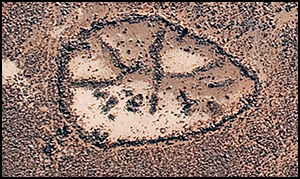Crossref Citations
This article has been cited by the following publications. This list is generated based on data provided by
Crossref.
Hammer, Emily
and
Lauricella, Anthony
2017.
Historical Imagery of Desert Kites in Eastern Jordan.
Near Eastern Archaeology,
Vol. 80,
Issue. 2,
p.
74.
Bewley, Robert
and
Repper, Rebecca
2017.
The Badia from Above: Successes, Limitations, and Potential.
Near Eastern Archaeology,
Vol. 80,
Issue. 2,
p.
84.
Rowan, Yorke M.
Rollefson, Gary
Wasse, Alexander
Hill, Austin “Chad”
and
Kersel, Morag M.
2017.
The Late Neolithic Presence in the Black Desert.
Near Eastern Archaeology,
Vol. 80,
Issue. 2,
p.
102.
Miller, Holly
Baird, Douglas
Pearson, Jessica
Lamb, Angela L.
Grove, Matt
Martin, Louise
and
Garrard, Andrew
2018.
The origins of nomadic pastoralism in the eastern Jordanian steppe: a combined stable isotope and chipped stone assessment.
Levant,
Vol. 50,
Issue. 3,
p.
281.
Smith, Stefan L.
and
Chambrade, Marie-Laure
2018.
The Application of Freely-Available Satellite Imagery for Informing and Complementing Archaeological Fieldwork in the “Black Desert” of North-Eastern Jordan.
Geosciences,
Vol. 8,
Issue. 12,
p.
491.
Meister, Julia
Knitter, Daniel
Krause, Jan
Müller-Neuhof, Bernd
and
Schütt, Brigitta
2019.
A pastoral landscape for millennia: Investigating pastoral mobility in northeastern Jordan using quantitative spatial analyses.
Quaternary International,
Vol. 501,
Issue. ,
p.
364.
Smith, Stefan L.
2020.
Drones over the “Black Desert”: The Advantages of Rotary-Wing UAVs for Complementing Archaeological Fieldwork in the Hard-to-Access Landscapes of Preservation of North-Eastern Jordan.
Geosciences,
Vol. 10,
Issue. 11,
p.
426.
Hill, Austin Chad
Rowan, Yorke M.
Wasse, Alexander
and
Rollefson, Gary O.
2020.
Inscribed landscapes in the Black Desert: Petroglyphs and kites at Wisad Pools, Jordan.
Arabian Archaeology and Epigraphy,
Vol. 31,
Issue. 2,
p.
245.
Guagnin, Maria
Breeze, Paul
Shipton, Ceri
Ott, Florian
Stewart, Mathew
Bateman, Mark
Martin, Louise
Graham, Lisa
el-Dossary, Sarah
Kingwell-Banham, Eleanor
Zahrani, Badr
al-Omari, Abdulaziz
Alsharekh, Abdullah M.
and
Petraglia, Michael
2020.
The Holocene humid period in the Nefud Desert: Hunters and herders in the Jebel Oraf palaeolake basin, Saudi Arabia.
Journal of Arid Environments,
Vol. 178,
Issue. ,
p.
104146.
Groucutt, Huw S
Breeze, Paul S
Guagnin, Maria
Stewart, Mathew
Drake, Nick
Shipton, Ceri
Zahrani, Badr
Omarfi, Abdulaziz Al
Alsharekh, Abdullah M
and
Petraglia, Michael D
2020.
Monumental landscapes of the Holocene humid period in Northern Arabia: The mustatil phenomenon.
The Holocene,
Vol. 30,
Issue. 12,
p.
1767.
Barge, Olivier
Perello, Bérengère
Régagnon, Emmanuelle
and
Noûs, Camille
2021.
Desert kites and aggregated cells of Mt Aragats (Armenia): Spatial coincidences?.
Quaternary International,
Vol. 579,
Issue. ,
p.
29.
Hill, Austin Chad
and
Rowan, Yorke M.
2022.
The Black Desert Drone Survey: New Perspectives on an Ancient Landscape.
Remote Sensing,
Vol. 14,
Issue. 3,
p.
702.
